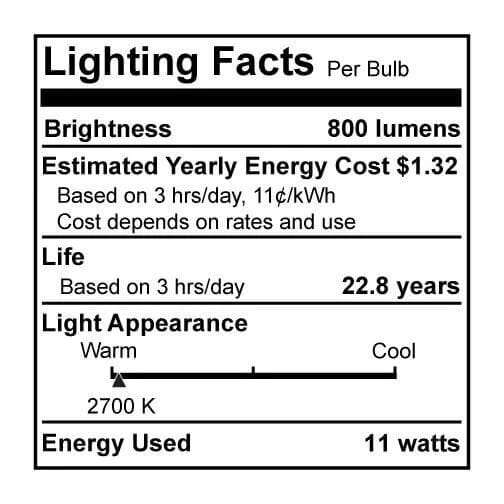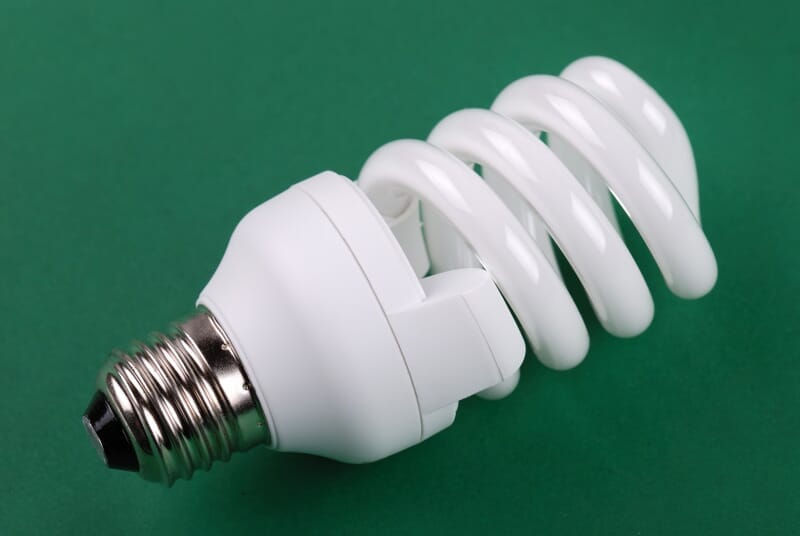Fluorescent lighting is not a new technology. However, the fluorescent choices available today are far different than what was available even five years ago. Much of this advancement has come in the area of compact fluorescent lights, which are more commonly referred to as CFLs.
How Fluorescent Lights Work
Fluorescent lighting is produced when an electric arc excites the gas in a glass tube, which ultimately causes the phosphor coating of the bulb to glow. This process is assisted by a small amount of mercury, which is about 4 milligrams per bulb in the case of CFLs. CFLs allow fluorescent lights to be used in many applications where incandescents are common, often using a standard screw base just like an incandescent bulb.
Fluorescent lights tend to look different from incandescent. This is because fluorescent sources often have a higher color temperature, which means that their light does not have that same yellowish glow that comes from incandescent sources. Some people prefer this cooler white light, especially for things like reading, preparing food and seeing different colors very clearly, like in a closet or while putting on makeup at the bathroom mirror.
Their advantages include a longer lifespan and a higher lumens per wattage output (more brightness with less energy used), while the downsides include a less versatile light source that is typically less desirable on the color spectrum than higher-wattage incandescents as well as the fact that they must be disposed of in a special way and can be dangerous if they break because of the small amount of mercury.
Fluorescent Lights and Energy Efficiency
Using compact fluorescent bulbs can make many standard light fixtures even more energy-efficient! A compact fluorescent bulb uses 75 percent less energy than a standard bulb and can give you $40 in lighting energy savings throughout its lifetime. In fact, here is a neat calculator that shows you just how much you can save by making the switch.
Are you hesitant? Try swapping out the bulbs in closets, attics, garages or laundry rooms first. Fixtures in these rooms might not be used every day, but the longer-lasting CFL bulbs ensure you will not be changing burnt-out bulbs as frequently. If you like what you see, the sky’s the limit–you can use CFLs in kitchens, bathrooms, bedrooms, living areas, outdoor areas and so on!
All light bulb boxes, including CFLs, feature a black-and-white Lighting Facts label that give you all the facts to help you make the right buying decision. Let’s check out a sample Lighting Facts label and go through what is included in it.

Brightness
If you want to know how bright a light is going to be, you need to become friends with lumens because, unlike the watt, lumens are how you measure brightness. (We’ll talk about the watt later.)
What are lumens? Lumens are the raw quality of light given off by a light source. Or, to put it a different way, lumens measure a light’s brightness. All common electrical sources have a lumen rating, including incandescent, fluorescent and LED sources. Remember it this way: the higher the lumens, the brighter the light.
Here’s a cheat sheet you can use to figure out how many lumens you should look for in a light source. In a CFL bulb, the wattages shown in this chart will provide the following brightness in lumens.
| Watts | Lumens |
|---|---|
| 100 watts | 1600 lumens (range of 1490 to 2600 lumens) |
| 75 watts | 1100 lumens (range of 1050 to 1489 lumens) |
| 60 watts | 800 lumens (range of 750 to 1049 lumens) |
| 40 watts | 450 lumens (range of 310 to 749 lumens) |
Many light sources in your home fall between the 60 and 100 watt range, which is the 800 to 1600 lumen range.
Estimated Yearly Energy Cost
This estimates how much it will cost you each year to power this light bulb. The estimation is based off a hypothetical usage of 3 hours a day and an energy cost of 11 cents per kilowatt. You might use this bulb for more or fewer hours a day and your energy cost per kilowatt might be higher or lower.
Life
This estimates how long the light source will last before you need to replace it. Like the estimated energy cost, this is also based on a use of 3 hours a day. Once again, your mileage may vary. CFL bulbs have an estimated life of about 9 years.
Light Appearance
Also known as color temperature, this is measured on a scale of degrees Kelvin, hence the large numbers with the K. 2700K is a warm, yellow-white light. 2700K is what standard incandescent light sources typically create. As you go up the sliding scale, the numbers grow higher and the color of light grows cooler, meaning it goes from yellow to white to blue. (Fun fact: A cloudy day has a very high color temperature.)
Sometimes it’s easier to see these things side by side, so here’s an example!

Energy Used
Remember, watts are used to measure energy, not brightness! However, watts are important since you never want to put more watts in a fixture than it can safely handle. Otherwise, you could blow fuses or start a fire. To help find a light source that will save you money on energy and give you an ideal brightness, look for one with the lumens you want and, with that number in mind, find a source with a lower wattage.
If you still have questions, feel free to contact us at 1-866-688-3562 or on social media.
Sign up for our email newsletter today and score an additional discount!
You can also learn about incandescent lights and LED lights.





May 7, 2021
[…] fluorescents, LEDs and even halogen bulbs are more energy-efficient, many consumers still prefer incandescent […]
May 7, 2021
[…] You can also read all about incandescent lights and all about fluorescent lights. […]